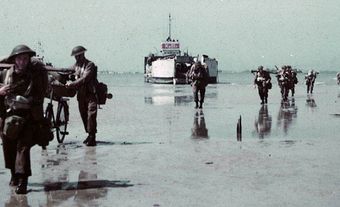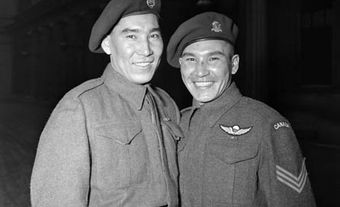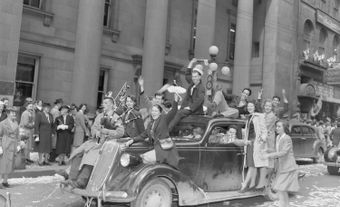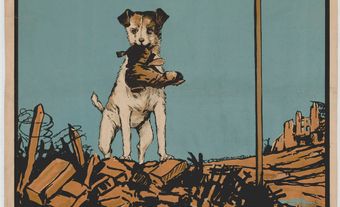Canada played an important role in the Second World War. It did much to help the allies win the war. Canadians fought on land, in the air and on sea. More than 1 million Canadians served in the military. Over 43,000 Canadians died. Approximately 50,000 Canadians were wounded. The war changed Canada forever. By the end of the war Canada had a very large military force. The Canadian economy was one of the strongest in the world. Canada paid more attention to world affairs than before. Canadians helped to create NATO and the United Nations.
(This article is a plain-language summary of the Second World War. If you are interested in reading about this topic in more depth, please see our full-length entry, Second World War.)

Canada Declares War
On 1 September 1939, Germany invaded Poland. Two days later France and Britain declared war on Germany. Canada declared war on 10 September. The Canadian military was very small at first but it grew quickly. In 1939, tens of thousands of Canadians volunteered for overseas service. By the end of the war, hundreds of thousands had volunteered. Beginning in 1940, tens of thousands joined the military because they had no choice. They were conscripted. At first, conscripted soldiers only had to serve at home.
The Land War
The first battle that Canadians fought was in Hong Kong in December 1941. They lost to Japan. Nearly 800 soldiers were wounded. Close to 300 were killed. Hundreds were taken prisoner. In August 1942 about 5,000 Canadian soldiers attacked Dieppe, France. Close to 2,500 were wounded. Over 900 died. In 1943 Canadians began fighting in Sicily. In June 1944 Canada took part in the invasion of Normandy. Canada and their allies pushed back the Germans. Then they helped to liberate the Netherlands in the spring of 1945. After this, they moved into Germany. Germany surrendered on 7 May.
War in the Air and on Sea
Canada’s air force was called the Royal Canadian Air Force. The RCAF was in the United Kingdom, North Africa, Italy, Europe, Southeast Asia and Canada. It played an important role in protecting ships in the Atlantic Ocean and the bombing of Germany. Over 17,000 members of the RCAF died. About 100,000 Canadians served in the navy. The most important thing the navy did was protect the ships going to Britain. Their biggest threat was German submarines. Approximately 2,000 members of the navy died.
The Conscription Crisis
In 1944, J.L. Ralston, the minister of national defence, called for overseas conscription. The Canadian military did not have enough soldiers. There was a problem though. Most French Canadians did not want to join the military. When Canada conscripted soldiers in the First World War there were riots in Quebec. (See First World War (Plain-Language Summary).) Prime Minister William Lyon Mackenzie King was concerned. But in November 1944, he announced that conscripts would be sent overseas. No riots occurred. About 13,000 conscripted soldiers went overseas, but few of them reached the frontlines.
Legacies of the Second World War
One of the most important legacies of the Second World War was that Canada was no longer seen as a British colony. Canada declared war and fought as an independent nation. This was different than the First World War. When Britain declared war, Canada went to war. And throughout much of the war Canada was led by British generals.
The Second World War made Canada wealthier than before. After the war, Canada became a leading industrial power. The Canadian government intervened in the economy and society on a huge scale. It would continue to do so. The human cost of the war was very high. Thousands of Canadians lost their lives on land, in the air and on sea. Their legacy is commemorated on Remembrance Day.

 Share on Facebook
Share on Facebook Share on X
Share on X Share by Email
Share by Email Share on Google Classroom
Share on Google Classroom



